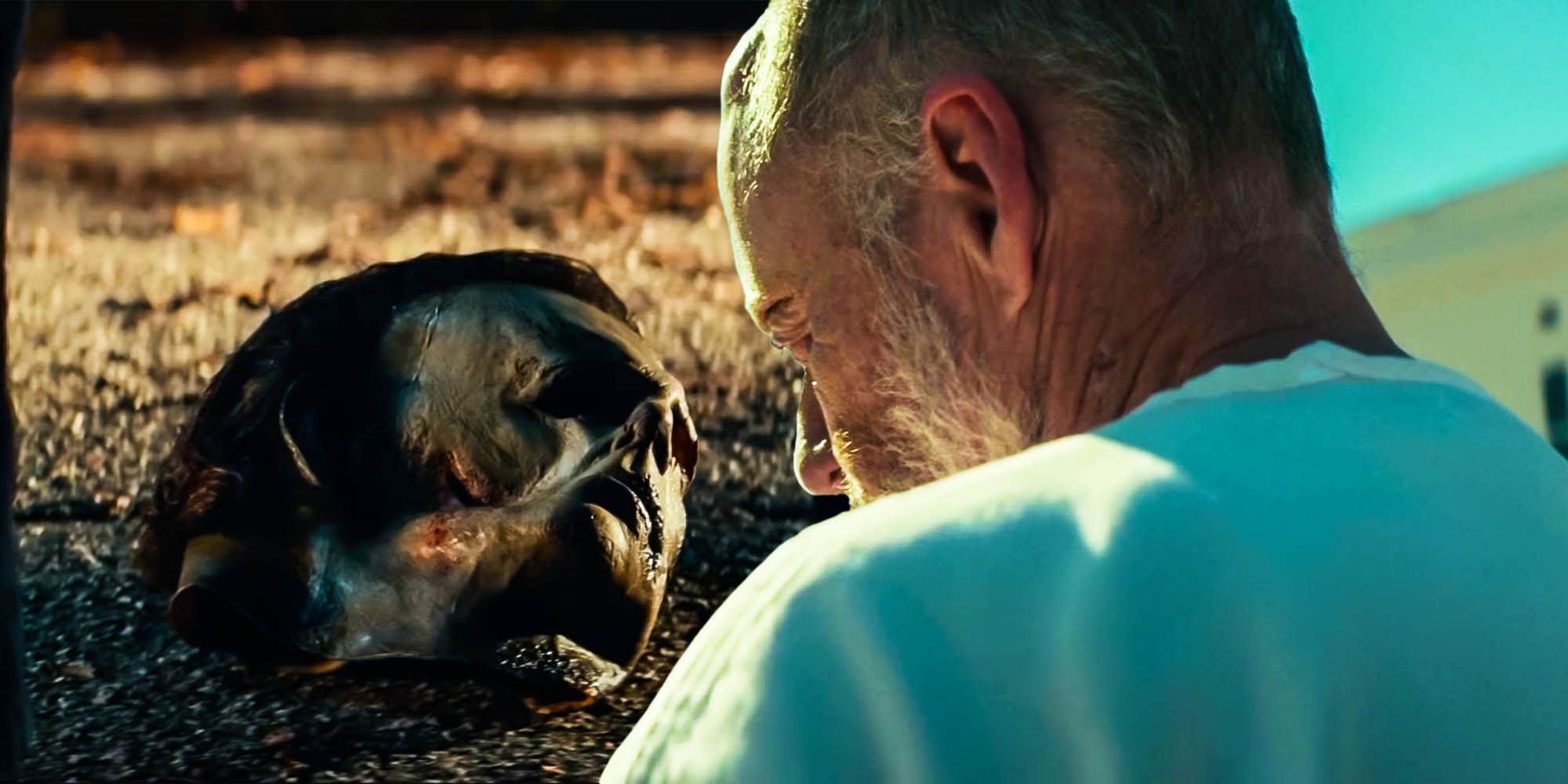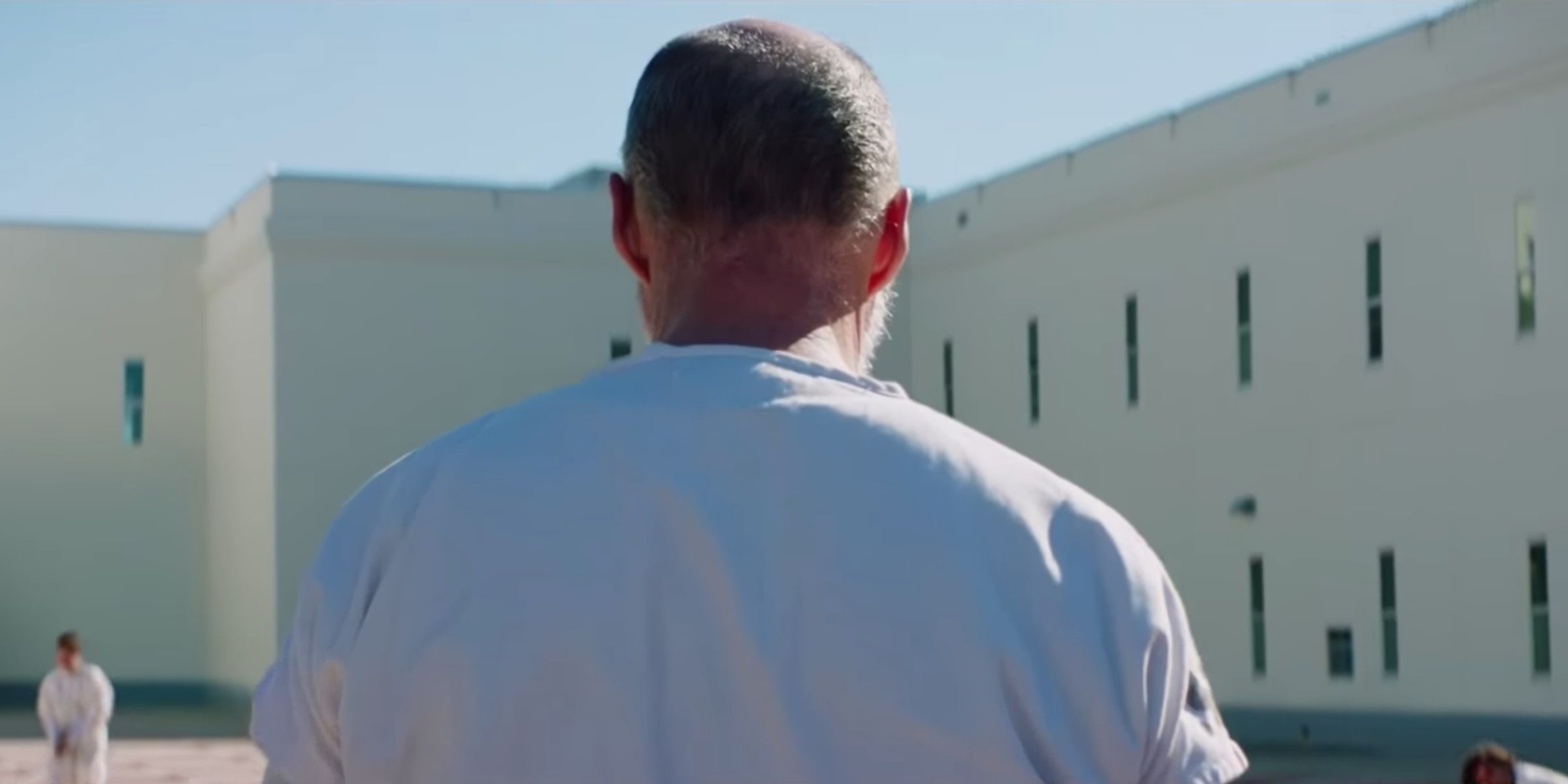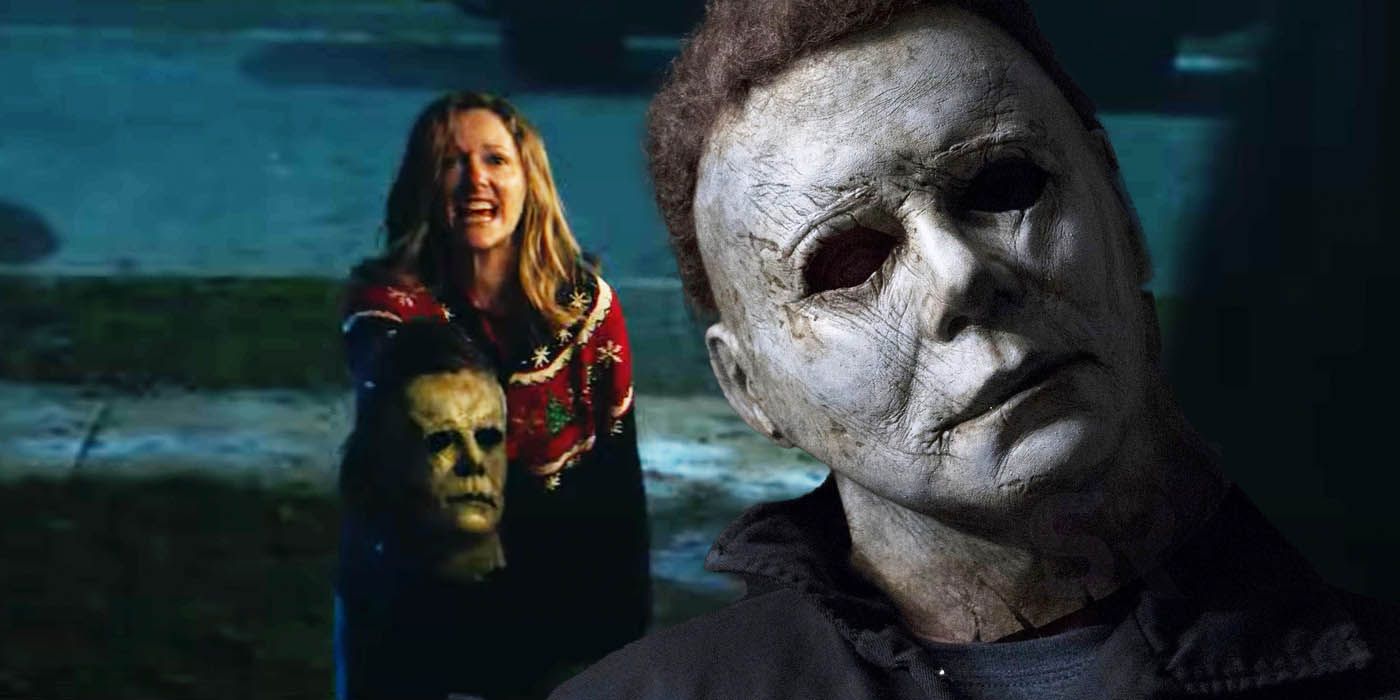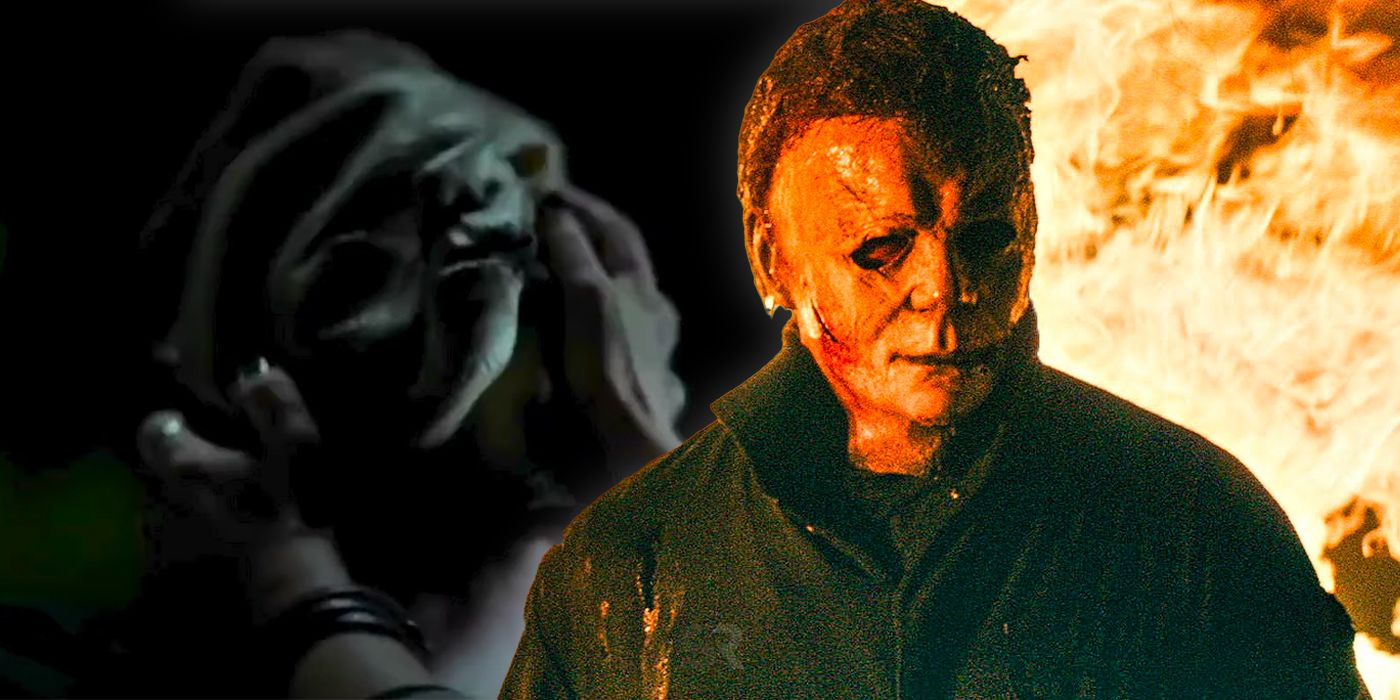Judging by the promotional materials for Halloween Kills, it seems the sequel will finally unmask Michael Myers—but here’s why seeing the franchise villain’s visage is actually a bad idea for the movie. The Halloween franchise has been through many iterations over the decades. As such, there’s no denying that the iconic slasher series has changed a lot since director John Carpenter’s original Halloween arrived in 1978.
Since that influential outing, the Halloween franchise has been through six direct sequels, an in-name-only anthology horror-style sequel, a two-movie reboot series in the ‘00s, and now a second reboot in the form of 2018’s Halloween. A direct sequel to the first film that retconned the rest of the (less critically successful) series, 2018’s Halloween was a largely critically admired return to the brutally efficient formula that made the original movie a success. Gone was the convoluted franchise lore and mythology, replaced by the simple story of masked murderer Michael Myers slaughtering scores of unfortunate suburbanites on the titular night.
However, sticking with the simple formula that fans want from the franchise is always a tricky proposition for sequels, which exist to outdo their original and thus justify their existence. Judging by the trailer for Halloween Kills alone, the sequel will massively increase Michael’s body count and see resourceful final girl Laurie Strode upgraded to a full-blown action heroine compare to her meek, bed-bound self in 1980's Halloween II. However, this is not the only major change that Halloween Kills promises to make to the franchise. The trailer implies that the climax will feature an unmasked Michael, a mistake the franchise has made before and should steer clear for repeating. A major part of Michael’s mystique comes from the unreadability of the masked visage and seeing a 60-year-old guy with an eye scar chasing characters around won't have nearly the same impact.
Halloween's Past Unmaskings Of Michael Myers Didn't Work
The finale of the original Halloween, Halloween 5: The Revenge of Michael Myers, and Rob Zombie's 2009 sequel Halloween 2 all saw Micheal unmasked. So, like Friday the 13th’s Jason Voorhees, a maskless Michael is not entirely new to the franchise. However, much like Camp Crystal Lake’s most famous son, Micheal Myers has never worked without a mask. The original unmasking works mostly because it barely occurs — the scene is brief enough to assure viewers Michael is human underneath his mask, but doesn’t dwell on the man behind the mask and doesn’t humanize him at all. However, the other two unmaskings of Michael failed outright, and the reasons for both failures are important to explore for Halloween Kills.
The first unmasking of Michael occurs in the dark in darkness during Halloween 5: The Revenge of Michael Myers and, as a result, the non-reveal is something of a false promise for fans. The scene looks silly rather than foreboding and adds nothing to the un-scary Halloween sequel. Zombie’s Halloween 2, meanwhile, has a more existential problem that Halloween Kills is more likely to struggle with. The slick, surprisingly scary action of 2018’s Halloween made it clear that the sequel is not likely to repeat the unintentional goofiness of Halloween 5: The Revenge of Michael Myers in its unmasking, but it could end up demystifying Michael by giving a clear look at his face like Zombie’s critically-derided sequel.
Why An Unmasked Michael In Halloween Kills Could Be Bad
Unmasking Michael in Halloween Kills is a tactic almost certain to fail because the character needs the mask to be scary, lest he becomes an aging man armed with a knife and an iron constitution. Along with giving Michael his first audible dialogue, Zombie’s sequel also offered viewers a good look at the killer’s face — and revealing that he was just some guy deflated the movie’s tension disastrously, despite the Halloween sequel’s impressive body count. It was a revelation that, while technically unsurprising, still sapped the character of mystery and fear factor, something Halloween Kills can’t afford to repeat. Halloween is, alongside Friday the 13th and A Nightmare On Elm Street, one of the most iconic horror franchises and has been parodied, subverted, reimagined, and referenced endlessly over the decades. Stripping its killer of his most recognizable accouterment would be less unexpected and more unwelcome, as it would take away Michael’s most iconic attribute — the fact that he is a faceless, unstoppable embodiment of evil.
How Halloween Kills Unmasking Could Work
Despite the understandable skepticism of fans, 2018’s Halloween reboot was a success, and therefore there is a chance the sequel will pull off Michael’s unmasking. However, doing so will require some finesse and the maintenance of mystery. Much like the best way to reveal the shark in Jaws was “barely, and as close to the climax as possible,” it is possible that the best way to unmask Michael is to never really unmask the character at all. If Halloween Kills follows through on its promise and does take off the character’s mask, the cleverest choice is not treating viewers to a full-on close-up but instead playing off the reactions of other characters to his unseen face. If anything, this might make the scene more intense, and would certainly be more chilling than any scarred but otherwise normal character looking back at Laurie.
Unmasking Michael Myers is a series mistake that has plagued the Halloween franchise for decades, but opting to unmask him only to the characters and not the audience would work perfectly and add to the tension of the sequel’s climax. If, for example, Laurie removes the mask, reacts to what’s underneath, and the camera moves as if to reveal Michael’s face, only for him to take a swing at her before audiences can see anything clearly, Halloween Kills would have a perfect sequel hook and an effective finale without ruining the character’s central appeal. It is a twist that would need to be handled gracefully and one that should avoid showcasing too much of Myers, but Halloween Kills can still steer clear of the pitfalls earlier installments landed into by keeping the character’s appearance a mystery for this final face-off.




